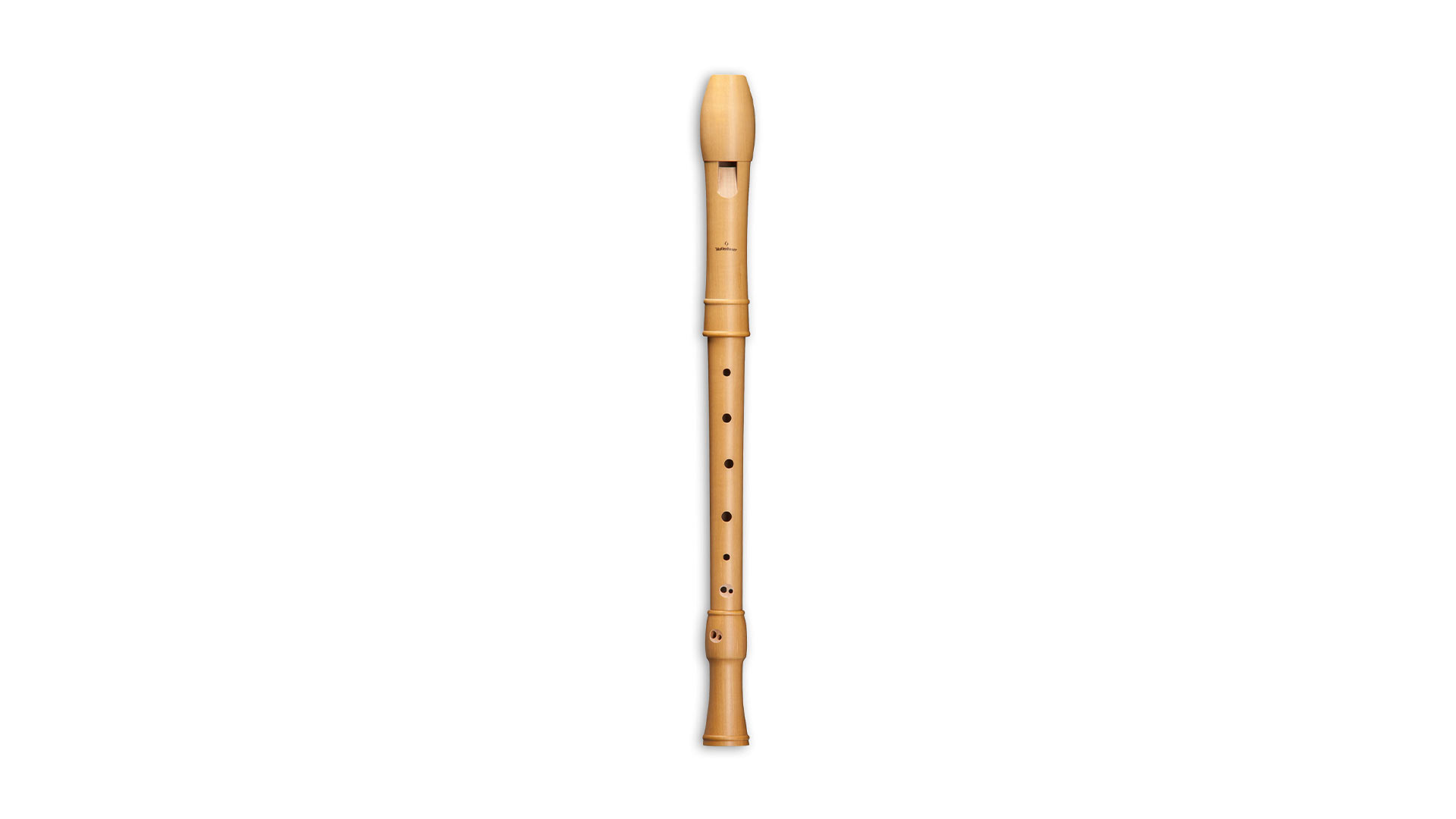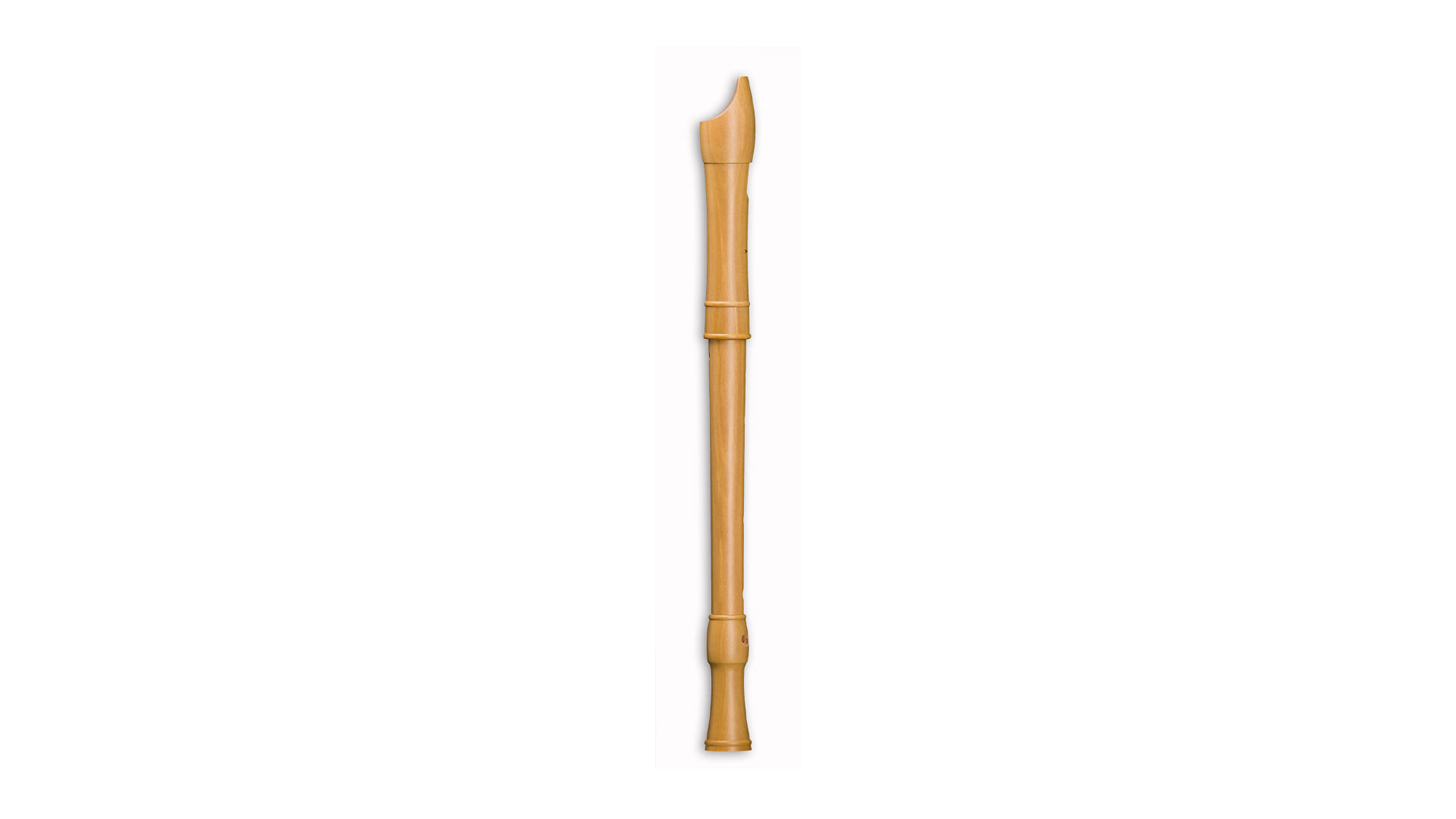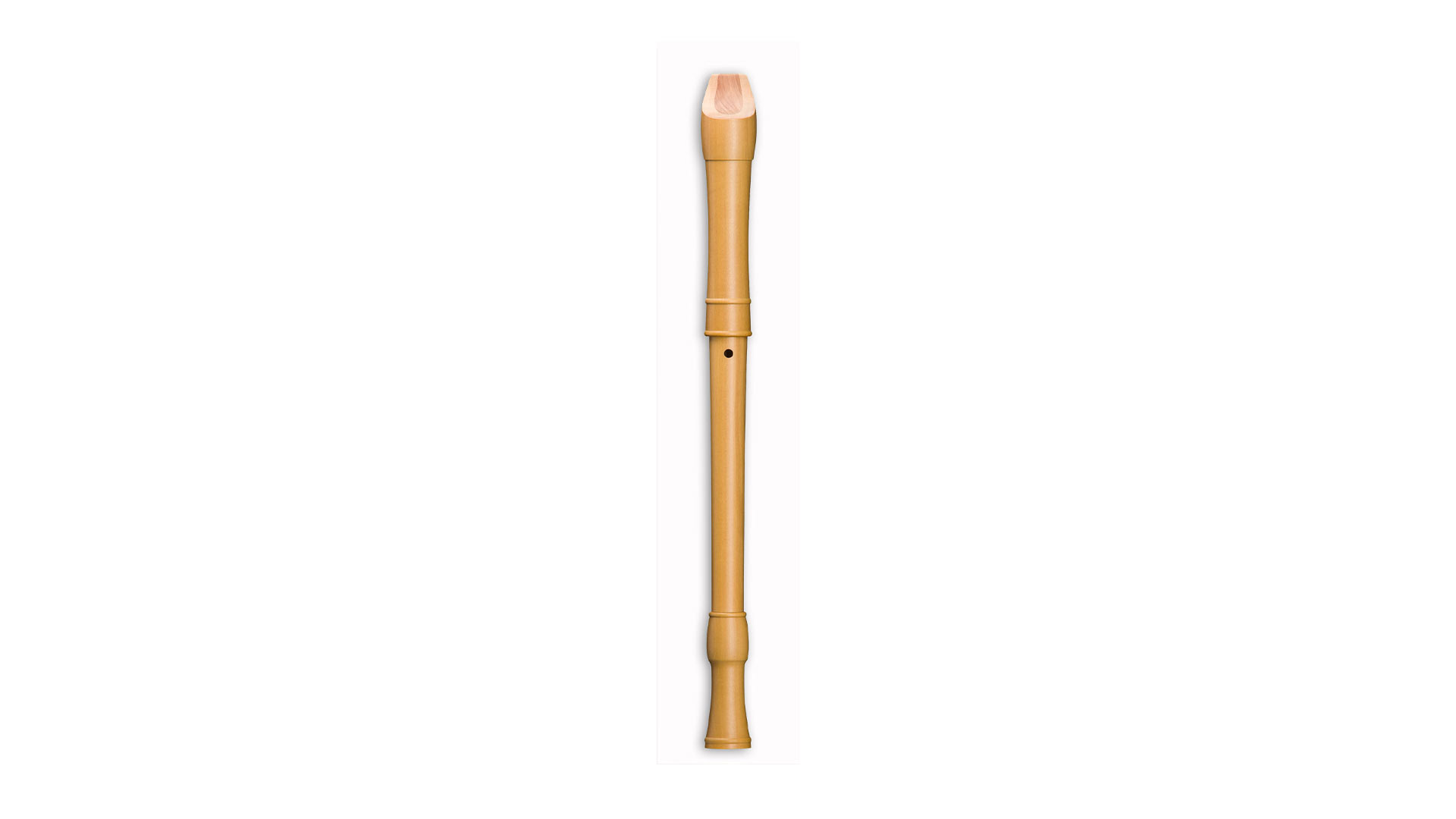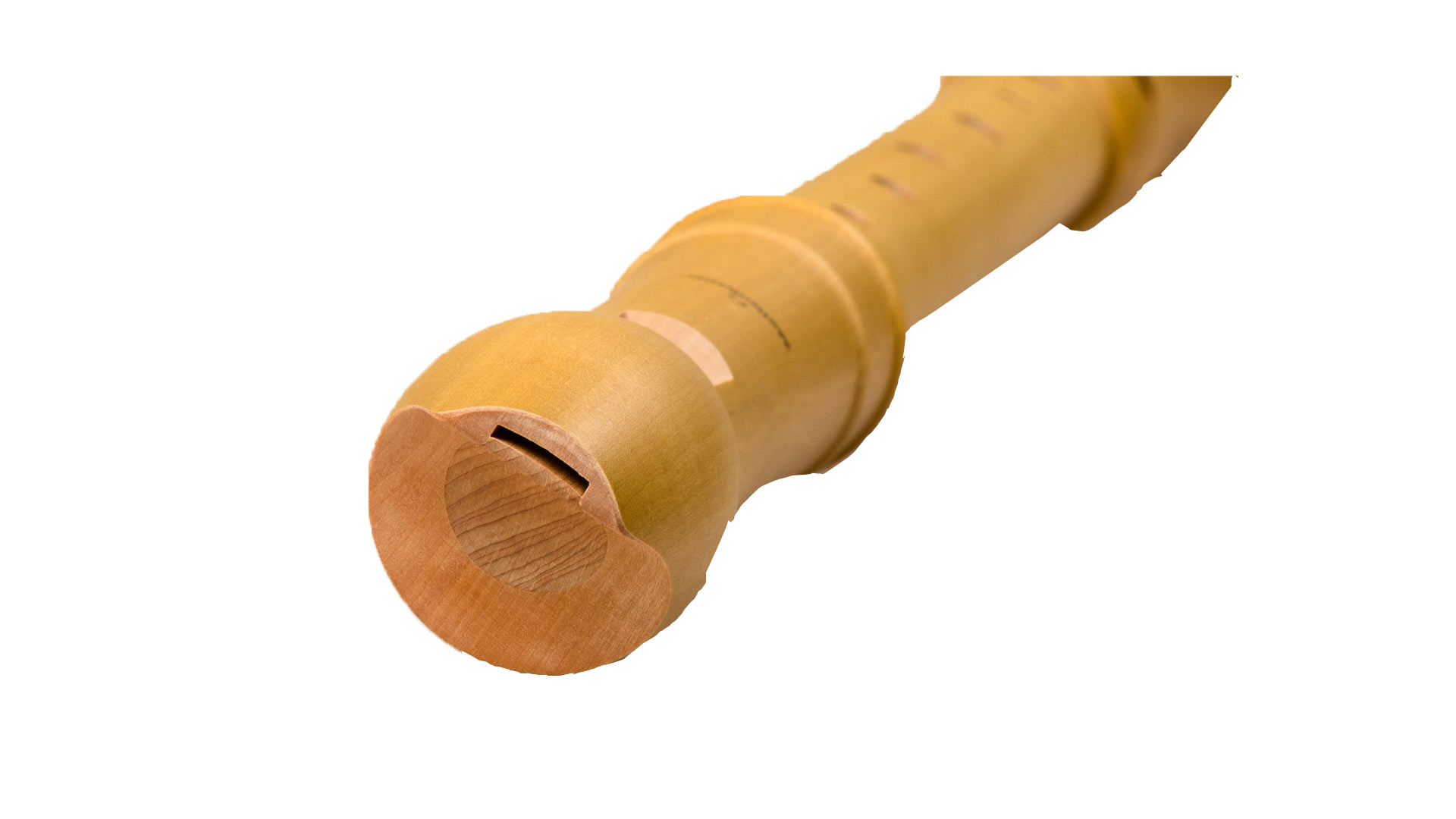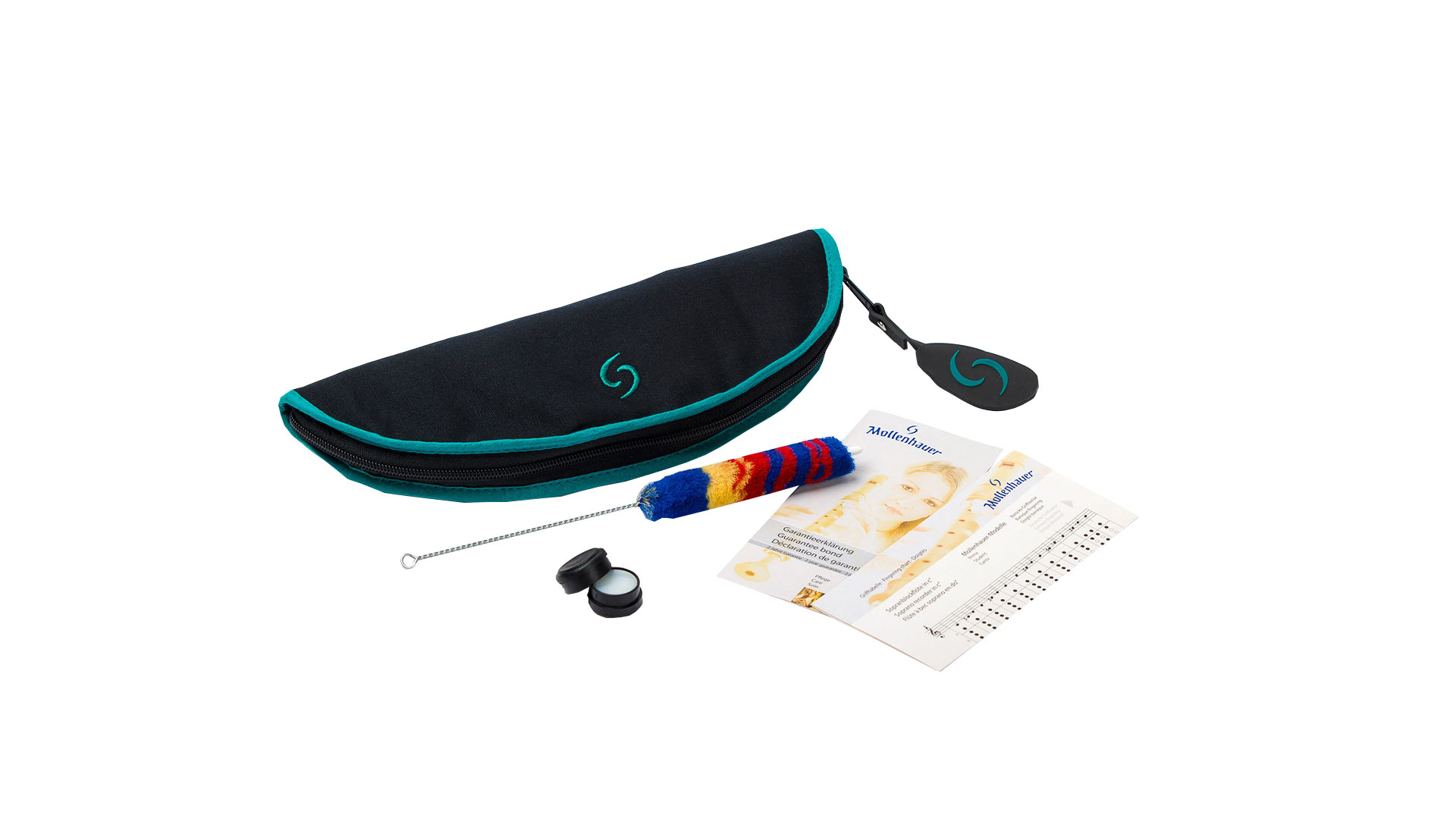, Item: 2266-MOLL Natural, 442 Hz
This with the article number: 2266-MOLL built by Mollenhauer is an instrument, that in making music new can provide fun.
This property is based to a large part on the careful combination of the unique form in combination with the qualities of the material Pearwood.
The bore
The course of the inner bore of the recorder is light cylindroconical. This kind of bore shape grants the instrument this special tone.In principle, recorders with wider bore sound warmer, fuller, more fundamental and thus more suitable for ensembles than instruments with narrower scale.
For which music can the recorder be used for?
Pearwood is particularly for woodwinds used for: focus on choral playing, recorder ensembles and orchestras, other styles are possible.To whom is this musical instrument addressed?
For the above facts it follows that instruments made of Pearwood are especially for ambitious amateurs and advanced players recommendable. A second valid rule is that a better instrument makes the interaction in most cases uncomplicated than a bad low-cost bargain.The windway of the recorder
The windway is the area in the headpiece of the recorder where the breath is formed into a thin sheet of air. This air leaf is the determining element of tone production. At the labium, the air stream is very quickly alternately directed inwards and outwards. This swinging flow stimulates the air in the bore. This is the origin of the recorder sound. This is the reason why the labium must not be damaged in any case. The same applies to the windway. Otherwise suffer the musical shaping ability of the recorder.
The windway of the instrument 2266-MOLL of Mollenhauer has this windway shape: Curved, cylindrical.Conical shaped windways accelerate breathing air more than cylindrical windways.
Never underestimate windway and labium! Their meaning for the voicing is complex in their design. Even minor damages here often lead to a total loss!
Fingerings
The instrument Mollenhauer 2266-MOLL is delivered in the version: .
Construction
The number of parts a flute influences strongly the way the woodwind instrument in use on the one hand is simple to handle in terms of easy assembling and on the other hand for the convenient transport.
This is a point that should not be underestimated, especially when transporting larger (and sometimes multiple) instruments.
{Experienced ensemble players can tell you a thing or two about this. Or ask leaders of recorder ensembles.
Leaders of recorder choirs know how useful good and compact recorder bags are.
Packaging and accessories
The recorder is offered as standard with: BagThe matching accessories included: pivot grease, microfiber wiper, care instructions, fingering chart
Advice on the way to new recorders
Ask acquaintances!The search for your new instrument should in no case be influenced by opinions prevailing in your environment.
Get your own realizations after testing an instrument. Don't let "well-meaning" advice.
Do not let others stop you from trying a unkown recorder model.
Your musical perception is as individual as you are.
Therefore, only you can decide which instrument will happy.
Our recommendation is therefore: Play also unknown manufacturers!
After that you will be amazed and can make a safe decision.
Information about instruments with keys
Not always can tone holes be placed in places in the of that are easy to grasp with the fingers. Especially with deep recorders sit for acoustic necessities certain tone holes ergonomically not to reach. On such instruments, keys are added, which make gripping significantly easier, or possible in the first place.This allows it to be {pleasant|light|ergonomic|conspicuous|above average| good grip even by players with smaller hands.
The instrument 2266-MOLL has the following flaps:
| Accessories: | pivot grease, microfiber wiper, care instructions, fingering chart |
|---|---|
| Bore shape: | light cylindroconical |
| Construction: | 3-part (head, middle, foot) |
| Material: | Pearwood |
| Material: Botanical name: | Pyrus communis |
| Material: Country of origin: | Austria |
| Packing: | Bag |
| Surface treatment: | Natural |
| Target group: | Ambitious amateurs and advanced players |
| Weight with case: | 0.3515 kg |
| Windway: | Curved, cylindrical |
| Size: | F-Alto |
| Tuning pitch: | 442 Hz |
| Group: | Recorder |
| Material structure: | Pearwood: Very load-bearing with a fine-pored structure. |
| Musical use: | focus on choral playing, recorder ensembles and orchestras, other styles are possible |
| Sound characteristics: | Pearwood: Soft, choral sound. Suitable for playing in a group |
Login



